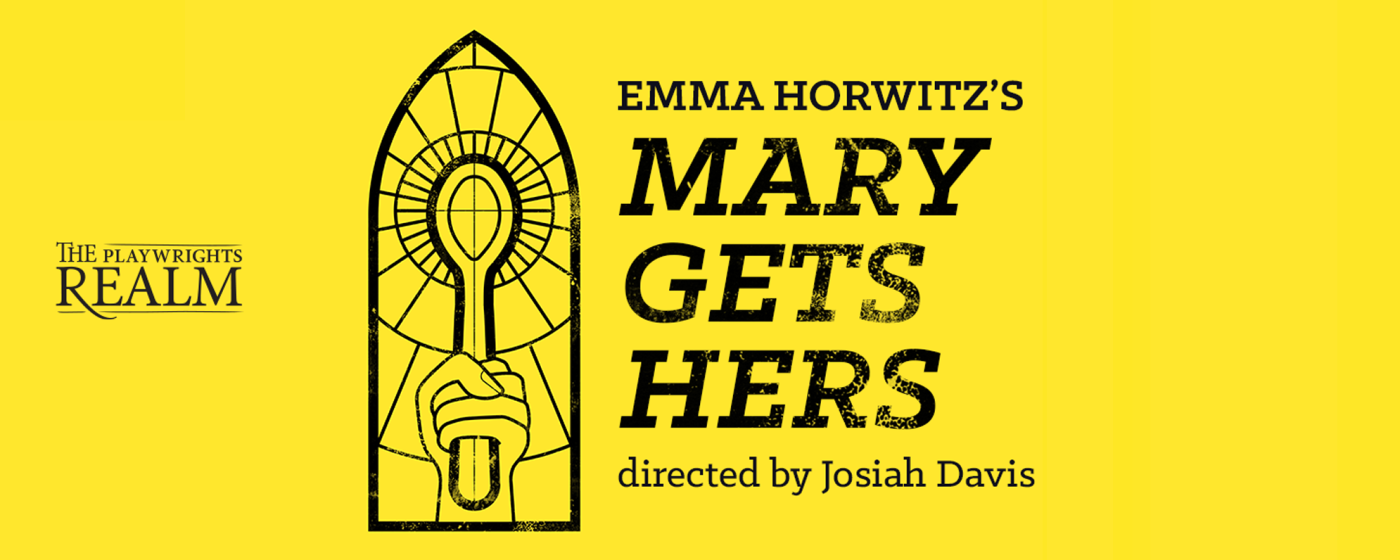
Studying in a city such as New York provides for some very interesting and out-of-the-box learning experiences for us medievalists. Mary Gets Hers, a production by the Playwrights Realm and staged at the MCC Theater Space, is a perfect example. Written by Emma Horwitz, it is an adaptation of a work by the first named female playwright, Hrotsvitha of Gandersheim, a 10th century canoness. The production proved to be an intriguing example of paying homage to an original work while updating it for modern sensibilities and notions of humor.
The plot of Hrosvitha’s play is quite simple. A pious hermit named Abraham is left in charge of his eight year old niece, Mary, whom he decides to dedicate to God as a virgin. He and his fellow monk Ephraim educate Mary in Christian morality and theology. When Mary is 12, she escapes her cell and ventures out into the world. This frightens Abraham, who worries that Mary may become corrupted by its vices, so he sends a knight friend of his to search for Mary. Two years later, she is found to be working in a house of ill repute. Abraham borrows his friend’s armor and horse and sets out to rescue Mary and bring her back to God. While he does find her in his disguise, he quickly reveals himself and Mary immediately repents, going back to the cell with him and doing penance. The original text serves as a parable of the mercy of God, reminiscent of Biblical stories like Hosea and his promiscuous wife Gomer in the Old Testament and the Parable of the Prodigal Son in the New. Hrotsvitha guaranteed redemption for her female lead while also portraying her own real calling to the religious life as a higher good than that which the world could offer. Hrotsvitha is known for writing tales of virtuous women beating the odds to become closer to God, such as her hagiographies of virgin martyrs, and Mary is no exception, though she does lose her way a bit along the path. However, the original text places the emphasis not on the one on the road to redemption, but on the pious one, Abraham, trying to bring her back.
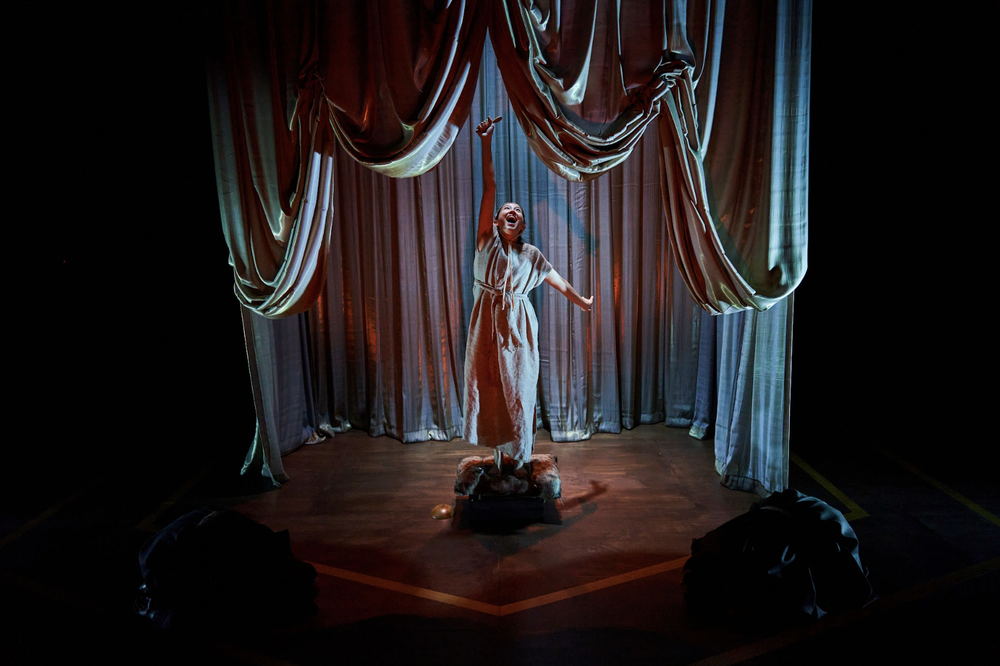
Mary Gets Hers seeks to expand on this part of the story, focusing on Mary’s lost years, while leaving Abraham literally waiting in the wings for his cue. Mary, who was a one-dimensional archetype in the original text, becomes a much more fleshed out version of herself here. Horwitz gives Mary a clear goal – to regain the feeling of love she had when her parents were still alive. She does not find it with Abraham and Ephraim, as they are too focused on God to care for her properly. She runs out into the world to find a sense of freedom, but is seduced by the Master of an Inn who seemingly offers her the love she is looking for through his “invited guests.” When she discovers what the Master has done to her, she returns to her cloister willingly, not out of a sense of shame as in the original, but because that is where she felt more love.
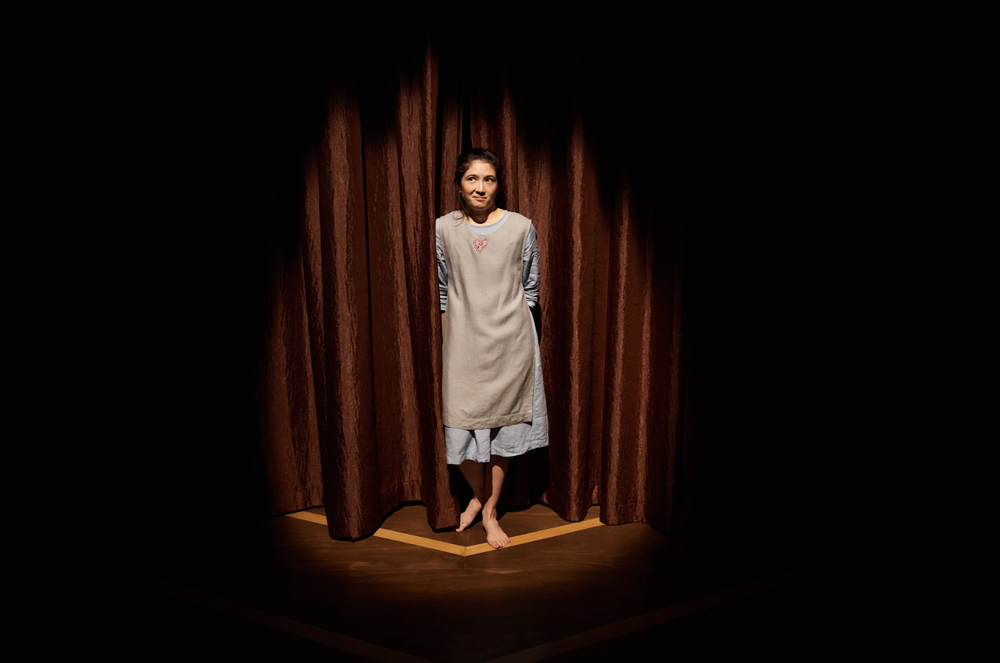
It was just everyone I’d ever loved.” – Mary at 8
Mary is played by Haley Wong, a true standout and an absolute delight. Through Wong’s performance, Mary grows from an adorable and naive eight-year-old, to a feral, gremlin-like tween, to a mature individual who knows how to love herself. Haley Wong shows a true understanding of her character and possesses the capacity to make the audience laugh and cry at the same time.
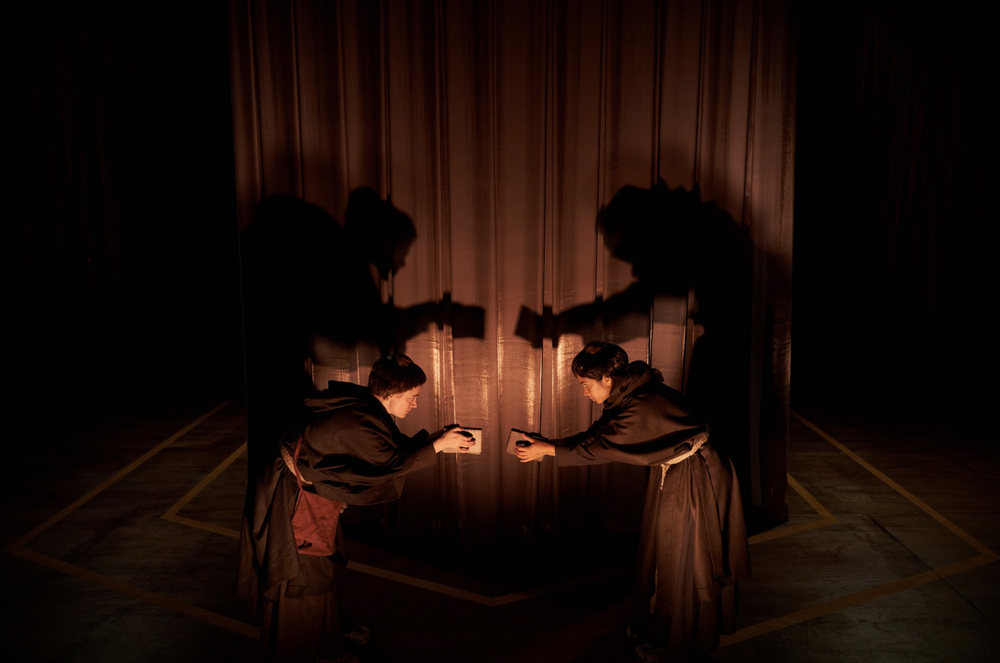
Susannah Perkins as Abraham and Octavia Chavez-Richmond as Ephraim are both funny and heart-breaking as well. Perkins is consistently hilarious throughout the play, but hits an emotional peak toward the end, when Abraham talks about his deceased brother, Mary’s father. Chavez-Richmond, however, steals every scene in which Ephraim appears. Ephraim’s arc throughout the show mirrors Mary’s. Both are desperately seeking love, Mary from the people around her and Ephraim from God, but both struggle to find it. Ephraim’s refrain of “God, if you love me, don’t say anything,” is funny but also heart-wrenchingly futile. Ephraim goes to great lengths to show his love for God, not allowing anyone else to wear the hairshirt so he can keep it on 24/7 and offering his “beautiful voice” in praise to God by simply repeating His name.
The performances of the actors in Mary Gets Hers are fantastic, however, at times it felt as if they were held back a bit by the script, which made some odd narrative choices. One of the biggest narrative changes from the original that I noticed was the shift in Abraham’s relationship with Mary. In the original text by Hrotsvitha of Gandersheim, Abraham is given charge of Mary after his relatives, her parents died. In Mary Gets Hers, however, Abraham “adopts” Mary after stumbling upon her when he approaches her house for unknown reasons. His identity as her uncle is saved as a big reveal later on in the show. The reasons for this narrative change are a bit muddy – perhaps Horwitz was attempting to make Mary’s treatment by Abraham creepier? After all, modern audiences are well aware of “stranger danger” and have read many news stories about the abuses children have faced at the hands of clergy. Thus, the discovery that Abraham is Mary’s uncle leads to a feeling of profound relief for the audience. The reveal of another family member does give Mary a different reason to return to life as a hermit instead of pure religious devotion; it allows her to be closer to her last remaining family member. It also emphasizes the connection between divine and familial love and puts the audience in a spot to be more receptive to it. While most people in the audience likely did not read the original play and thus would not know Abraham’s relationship to Mary, it was a confusing change for those in the know, though the ensuing reveal did lead to one of Perkins’ strongest acting moments.
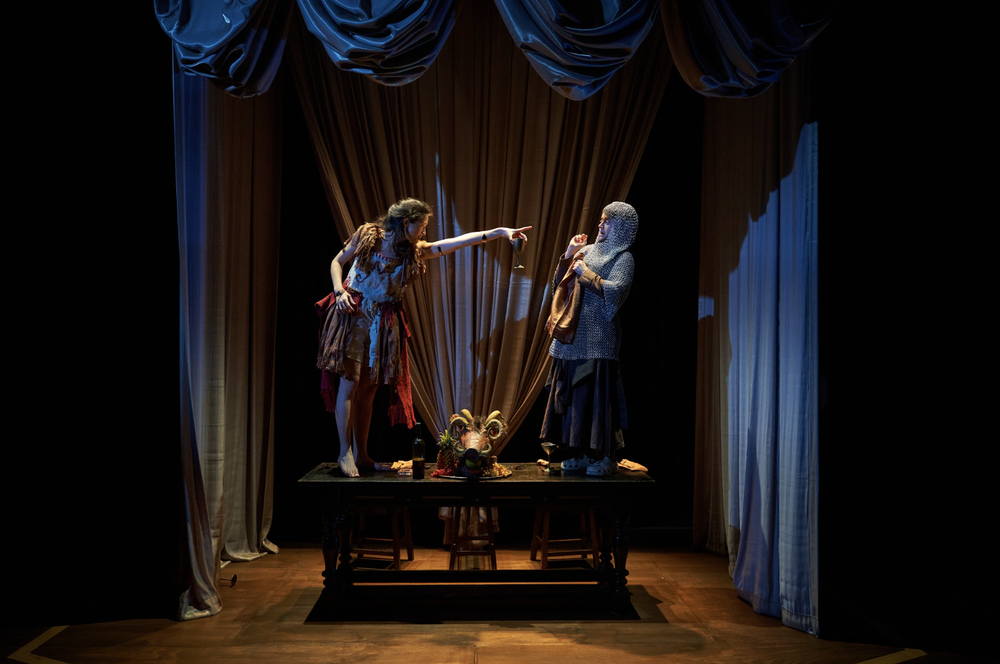
However, an even more confusing narrative choice was how Mary Gets Hers handled the titular character’s continuous sexual assault. One of the benefits of having a believably written young girl is that things can be shown through her naive perspective. Since Mary didn’t fully understand why the men at the inn were visiting her, the audience saw through her eyes what was occurring – a long line of men claiming to love her. But while Mary’s monologue about her situation comes across as both naive and desperate, the never-ending line of lovers, all played by Claire Siebers in increasingly ridiculous costumes, is a complete tonal shift from the hidden tragedy unfolding before the audience’s eyes. The plot also moves so quickly that neither the characters nor the audience were able to sit with the realization of what had happened to Mary. These choices are perhaps made to get the audience to connect with a story written a millennium ago. The Master of an Inn is seemingly modeled after known traffickers and the speedy succession of lovers is perhaps reminiscent of the blur that victims describe in testimonies.

By the end of the show, Mary chooses not to identify herself as a victim, and the triumph of resilience and loving oneself is a welcome antidote to the real-life horror stories with which a 21st-century audience is no doubt familiar, and offers a narrative of hope. While the play explores some very interesting ideas, the heavy subject matter of a teenage girl manipulated into becoming a prostitute required defter and more careful treatment than it was given.
For all its faults, Mary Gets Hers presents something unique – an absurdist yet historically-minded take on the medieval period. The anachronistic costuming, like the monks wearing Crocs, and music that might make one think of A Knight’s Tale, while the absolute preposterousness of the situations, such as Mary’s parents dying of a plague which turns people into foam, is marginally reminiscent of something seen in Monty Python and the Holy Grail. Yet, perhaps more so than those other two properties, the show is aware of the history surrounding it. Not only did Horwitz create a piece to speak to those affected by the “plague” of the modern day, the COVID-19 pandemic, but she had the task of introducing a group of New Yorkers to the work and world of a truly exceptional woman who most do not know or would otherwise have no opportunity to learn about. The marketing surrounding the show emphasized the connection to Hrotsvitha and made sure to inform audiences of just who she is. Often, the character’s lines were adaptations of those in the original play but presented with a different tone. For instance, Mary’s conversion is played more sarcastically by Wong as opposed to the more pious feel of original lines. The production of the show also called back to Hrotsvitha, with its stripped down staging and costuming as well as its all-female and nonbinary cast evocative of how the original play likely would have been staged at Hrotsvitha’s abbey. All in all, Mary Gets Hers may play into tropes about the medieval period and need some fine-tuning in its narrative, but its distinctive flair and recognition of the source material makes it a very interesting case study of medievalism in New York.

